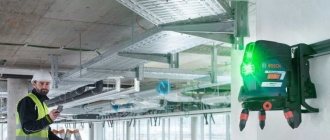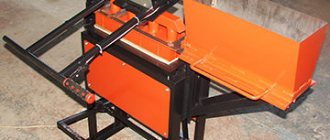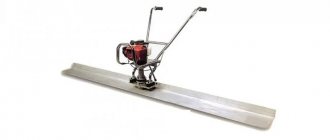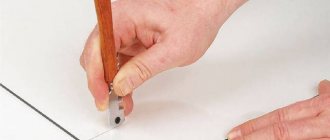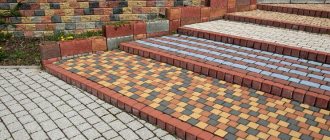Laying tiles and porcelain tiles Leveling tiles and porcelain tiles DLS tiles and porcelain tiles
Everyone at one time or another had to do their own home repairs, even minor ones. But when the question concerns laying ceramic tiles, it doesn’t even come to mind to take on this process yourself. But even a beginner can cope with such a task thanks to an innovative method that allows him to independently correctly align the plane of the facing material.
Three elements of the DLS tile laying system
The principle of operation of the DLS system is to help the layer, without additional tools, to level the surface of adjacent tiles, for all possible types of laying. By types of installation we mean classic cross-laying, T-shaped installation with offset, deck laying of tiles.
The DLS tile laying system consists of three elements: two working parts and one special tool, namely:
- The basis of the DLS system (one-time element);
- Leveling wedge (reusable element);
- Clamp clamp.
Wedge Clamping Tool
For more comfortable and faster work with large RLS, DLS and Karofit systems, special pliers (pincers) were manufactured. Not only do they allow you to quickly and powerfully clamp the wedges into the clips (and protect your hands and fingers), but they also do this with a constant, equal force, thanks to their precise adjustment.
That is, once you adjust these pliers to a certain thickness of the tile, you will no longer experience under-pressure or over-squeezing with the clip breaking.
Recently, manufacturers of more compact SVPs have also begun to think about making tongs for their systems. For example, SVP-Nova already has such a tool.
DLS tile laying system: preparatory work
You may come across the opinion that the DLS system of laying tiles or laying porcelain stoneware will allow you to lay the tiles evenly on any (in terms of leveling) surface of the floor and wall. This is not entirely true. The use of the DLS and SVP tile leveling system does not cancel the main preparatory work, leveling the base.
For high-quality tile installation, it is better that the surface for laying is pre-leveled. A screed is made on the floor (self-leveling floor, leveler), the walls need to be leveled with plaster or plasterboard.
About the advantages and disadvantages
Any new system is created with one goal - to make life easier for the common man. The DLS tile laying and leveling system is no exception. Thanks to its use, it has become possible to carry out most professional tile laying work with your own hands.
Main features of DLS:
- Significant time savings. The system allows installation 4 times faster than usual;
- Accessibility for a beginner. To work with it, you do not need to have any knowledge of installation work;
- Eliminates the possibility of failure in the level of seams;
- Ability to work with both floor and wall tiles. The system creates an even first row that provides direction for the remaining rows of wall tiles;
- Minimum amount of waste left after work;
- Reusable wedges and clamp.
What can be said about the shortcomings of the system? Fortunately, there aren't that many of them. However, they exist and should be discussed in detail:
- The main disadvantage is the relatively high price of components. However, it is still cheaper than paying for the installation work in full. Moreover, all components (except for the base) can be used several more times;
- Adjustment of the tiles is only possible until the adhesive base dries. This can hardly be called a serious drawback, because the system ensures even laying; however, it is better to double-check that you have laid all the material evenly before the glue dries completely.
How to work with the DLS system for laying and leveling tiles
Important! It is extremely important to achieve a perfect result when using the DLS tile system, it is to align the first row of tiles on the wall and the first three to four tiles when laying tiles on the floor.
Related article: SVP tile laying system: tiling work in the kitchen
All stages of using the DLS system for tiles are shown in the photo.
Steps to use DLS tile laying system
Important! Note. The base of the DLS system can be laid in a cross or crosshair of tiles.
Note. The base ears replace crosses for tile joints.
Is the game worth the candle?
The new system helps make tiling work even better. It is preferred by both experienced craftsmen and beginners.
It is very difficult for an inexperienced master to immediately achieve an attractive appearance and follow the installation technology, so DLS is designed to simplify all manipulations as much as possible.
Comparison of DLS and SVP tile leveling systems
The SVP system is cheaper than the DLS system. However, if we look at the installation photo, we will see that three to four times more SVP elements are needed.
Another difference. The quality of the SVP system suffers somewhat depending on the manufacturer. The place where the pin is attached to the support is especially affected. It is quite possible that the support will come off the base during wedging. Or vice versa, the support does not come off well from the base and therefore a hammer is used to remove the SVP elements, and the DLS elements are knocked down with a hand or boot (more simply).
Pros and cons of laying out using the DLS method
This method is very popular in construction; it is in demand due to the fact that:
- To work with this method, you can use various types of tiles. Layout in this technique allows you to make the first, approximate row almost ideal and flawlessly even. Focusing on it, you can lay out the subsequent various rows as evenly as possible;
- The work process is much faster compared to the classic method of laying tiles;
- The materials necessary for laying out, such as clamps and wedges, can be used not only once, but the tools are reusable;
- The work is quite clean, with minimal remnants from production;
- Working with the DLS technique is simple, there is no need to master construction skills, since there are practically no difficulties in the work, everyone can do it on their own, without the help of builders;
- The laying is done without seams, thus deformation or displacement of the tile covering is minimized.
The disadvantages of this method include the high cost of the necessary materials for the work, but these materials are reusable and can be reused (the base cannot be reused).
The work must be carried out at a time when the base has not yet set, and the tiles must be laid out and leveled.
Despite the fact that laying materials are quite expensive, laying tiles yourself will be much cheaper than hiring a craftsman and paying for his work along with the materials.
Where to buy SVP?
You can order original Karofit SVPs from the manufacturer on the website svptool.ru
SVP Karofit (Karofit TLS) is a complete analogue of RLS Raimondi and DLS, both in shape/size and quality. Production is located in Turkey.
- Karofit has a clip (clip/base) that is only 1mm thick!
- the shape of the wedges has also recently been refined and updated - now they have a sharper shape, and thanks to the directional teeth the wedges are clamped even smoother and softer
- the wedge is made of durable alloy - it is truly reusable (unlike some cheaper SVPs)
- at the moment SVP Karofit has the best price among its analogues
- the Karofit system is represented in many European countries - Germany, Spain, France, Belgium, the Netherlands, Austria, Serbia, Czech Republic, Poland, Bulgaria, Turkey, and now Russia
- Among the company's own developments are pliers (clamping tools), the quality of which has already been appreciated by hovercraft manufacturers in many countries and they have begun to equip their systems with them. Mustang LS (Spain), Pony LS (Spain), DLS (Russia), Lantelme (Germany), Tegelleveling (Netherlands) and many others use Karofit tongs in their svp
@instabur.pro recommends!
Buy SVP Karofit
The main differences between different hovercrafts according to @instabur.pro
For myself, I divided all the SVPs with which I had the opportunity to work, conditionally into two types - small (3D crosses, TLS, SVP-Nova, etc.) and large ones (DLS, Karofit, radar, etc.).
The first are Svp No. 1, 3D crosses, Svp-Nova, Tls-Profi and their analogues.
Their distinctive features are their compact size, low price, and the absence of tools for clamping wedges from most manufacturers. Ideal for working with small and medium format tiles.
I’ll say right away that I don’t use systems on one leg (Svp No. 1, 3D crosses) in principle, as they are twice as weak by default.
The second ones are RLS, DLS, Karofit, Mustang and their analogues/counterfeits.
The differences are a more powerful wedge and clamp, a higher price, due to the size it is possible to use one clamp at the intersection of three or four tiles, a convenient tool for clamping wedges (tongs). Ideal for working with medium and large format tiles.

